South America Bike Tour Packing List
I recently published the complete packing list for my bike tour in Europe this past summer (2016), but I’m in South America now and I’ve packed a little differently for this particular journey.
Much of my gear has stayed the same, but there are some major differences between my Europe bike tour packing list and the one I have now for my cycling adventure in South America. Most notably, I’ve changed from red to blue Ortlieb panniers, I’ve added a bike lock to my list of essential gear, and I’ve removed my SPD shoes and pedals from the list of gear I’m carrying with me on my bicycle.
As I’ve said with my previous bike tour packing lists, I encourage you to use this packing list as a rough guideline for your own bicycle touring adventures… or (better yet) see my book, “The Bicycle Touring Blueprint” for more information on what to pack, how heavy your bicycle should be, what type of bicycle and gear you should be using, how to get yourself and your bicycle/gear to the start of your bike tour, what to expect once you hit the road, how to find free and cheap places to stay each night, and a whole lot more.
![]()
The Co-Motion Pangea is the same touring bicycle I’ve been riding since 2012. I’ve ridden this bike across more than 40 different countries all around the world and it’s the bike I chose to use yet again on my cycling adventures this year in South America (Ecuador and Colombia). This is the sort of bike you want for a trip in South America, as it can handle both on-road and off-road riding.
![]()
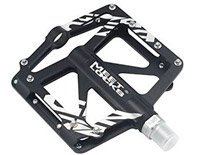
I’ve been cycling with SPD bicycle shoes for the last 12+ years now, but for this particular bike tour in South America, I wanted to try something a little different. So, I left my SPD shoes and pedals at home and opted to travel with only a single pair of flat-soled shoes. Therefore, I am using regular flat aluminum pedals on my bike tour in South America this year.
![]()
The Axiom DLX Streamliner has a narrower profile than other rear bike racks, which reduces the space at the top of the rack for carrying gear, but otherwise it’s a good, inexpensive bike rack. I’m not using a solar panel on this particular bike tour, so there’s no need really for extra space on the top of my rear rack.
![]()
I’ve been using this same front bike rack on my bicycle touring expeditions all around the world for the last 12+ years. The Arkel AC Lowrider is a very good front bike rack that I would highly recommend.
![]()
There’s nothing fancy about my fenders. They are cheap plastic 26 inch fenders produced by Planet Bike.
![]()
I’ve got three of these water bottle cages mounted to the frame of my touring bicycle.
![]()
It’s pretty difficult to find a bicycle water bottle that isn’t plastered with logos, but I managed to find a few clear plastic water bottles that work well for my cycling adventures.
![]()
The Ortlieb Bike-Packer Plus panniers are my favorite bicycle touring bags. They’re large enough to carry all my gear, completely waterproof, and good looking. The pannier is shown here with a shoulder strap, but I don’t pack or carry that strap with me when I’m touring.
![]()
Ortlieb Sport-Packer Plus panniers are perfect, waterproof bicycle touring panniers for the front of your bicycle. Once again, the product is shown here with the included shoulder strap, but I do not pack or carry this strap while I am on the road.
![]()
I can’t imagine bicycle touring without my Ortlieb Ultimate6 Handlebar Bag, which I use to carry my wallet, cameras, and various bicycle tools.
![]()
I’ve been using this Knog Blinder Circle USB bike light for several years now and it continues to function well for my travels by bike. I rarely use it on the bicycle (mostly just for cycling through tunnels), but I do use it quite often as a light for the inside of my tent in the evenings.
![]()
This is my first year using the Blackburn Central 50 rear bicycle light and it has worked well for me thus far. The battery lasts quite a while and I never had any other problems with the light during my travels.
![]()
The Blackburn Atom SL 4.0 bicycle computer is another new addition to my packing list this year. The battery on the sensor died after just one month on the road, but that was easily replaced and the computer as a whole has been working flawlessly ever since.
![]()

I use this short bungee cord to carry my tripod (and other miscellaneous items I might pick up along the way) on the top of my rear bicycle rack.
![]()
The Lezyne Sport Drive HV hand pump is an inexpensive bicycle pump, but it worked flawlessly for my travels in Europe this summer, so I decided to bring it with me to South America as well. It’s compact, lightweight and easy to use.
![]()

I bought myself a new multi-tool this year after my old one had become worn. The Origin 8 wooden multi-tool is a little on the heavy side, but it has all the Allen wrenches, screwdrivers, and such that I need.
![]()

This is the same small (but not very light) pedal/S&S coupler wrench that I’ve been carrying with me for the last five years. I use the wrench to install and remove my pedals, as well as to tighten and loosen the S&S couplers that allow me to split my bicycle in half. See my review of the Co-Motion Co-Pilot travel case for more information on how this works.
![]()
My fenders have a small 10 mm nut that is used to hold the fenders in place over the tires. Therefore, I have to carry this small wrench with me in the event that these nuts should ever come loose or need adjustment.
![]()
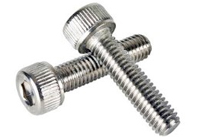
Rack, fender and water bottle screws are notorious for wiggling loose during the long days of cycling on a bicycle tour. That’s why I always carry at least two or three extra rack screws with me – just in case.
![]()
If I get a flat tire, I can usually repair the flat with a basic repair kit and two additional plastic tire levers.
![]()
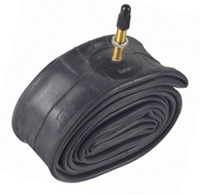
In the event of a flat tire, I always have at least one spare bike tube on me at all times.
![]()
The Big Agnes Copper Spur UL is a small, lightweight tent that feels pretty big inside once you set it up. I bought this tent because of how small and light it is and it’s turned out to be my favorite bicycle touring tent ever. Highly recommended!
![]()
I’ve used dozens of different sleeping pads and mats over the years, but the Vaude Sove is, by far, the best sleeping pad I’ve ever used. It’s perfect for summer bike touring, but not ideal for winter cycling expeditions.
![]()
This small, lightweight sleeping bag is ideal for a summertime bicycle touring expedition. The Marmot Always Summer sleeping bag is insulated with down, so even in the cooler nights of spring and summer, this sleeping bag will likely keep you warm.
![]()
This small folding knife is carried in my handlebar bag and can be accessed quickly if need be. But the main purpose for this knife is for food preparation.
![]()
A lightweight titanium spork is the only kitchen utensil I’m carrying on my bike tours these days (unless you count my folding knife, of course).
![]()
The day before I left on my trip to South America, I realized that my old Giro Xen bike helmet was broken and could no longer be used. So I rushed around to my local bike and sporting good stores in search of a new helmet for the trip. The Giro Revel wasn’t my first choice, but it was in stock and it fit well. I wish the visor were a little bigger (to help shield me from the sun), but otherwise it is a nice, inexpensive bicycle helmet.
![]()
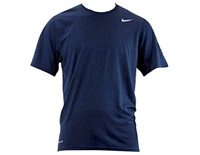
I brought only two jerseys with me on my bike tour in South America this year. I brought this dark blue Nike sports jersey (which wasn’t designed for cycling specifically – it’s the same jersey I wore on my bike tour in France’s Loire Valley) and the long-sleeved Fox MTB jersey you see below.
![]()
I bought this long-sleeved cycling jersey from Fox, thinking that I would rarely, if ever, wear it, but it has turned out to be my favorite cycling jersey ever. The jersey is light enough that I can wear it even in hot weather, and because it’s long-sleeved, it helps to keep the sun from burning my arms.
![]()

I don’t ride in a pair of special bicycle shorts. I just cycle in a pair of black Volcolm shorts – like the kind you might find at your local surf/skate shop.
![]()
The REI Rhyolite rain jacket is stylish and super compact. It’s very lightweight and can be squeezed into any empty spaces you might have inside your panniers, but it isn’t very warm, so it needs to be used in conjunction with a much warmer, insulating jacket.
![]()
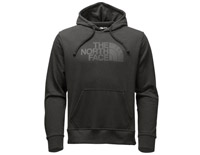
I had packed a Patagonia fleece jacket for my insulating layer on my bike tour in South America, but when I was at the airport and leaving for my trip, I left the jacket in the car. Whoops! So, once I arrived in Quito, Ecuador I bought this very basic North Face hooded sweatshirt. It’s lightweight and way more comfortable than the fleece jacket I had packed originally, but I don’t know how well it’s going to work as an insulation layer on the bike. We shall see!
![]()
I’ve got a basic set of North Face rain pants. I rarely cycle in these pants actually, and use them more at night to sleep in than for any other purpose.
![]()
Instead of packing two separate pairs of shoes (one to wear while riding the bike and the other to walk around in) I decided to pack only a single pair of flat-bottomed shoes for my bike tour in South America this year. I picked up these Quechua Forclaz Flec 3 hiking shoes in Romania last summer and I decided to wear them on this trip because the sole of the shoe is so incredibly firm – which is good for cycling and hiking.
![]()

Off the bike, this is the one and only pair of pants that I wear. They are a lightweight pair of black jeans. Because they are black, they work well in both formal and informal environments.
![]()

Nothing special here. I carry just a few T-shirts with me on my bike tours. One of these T-shirts I used to sleep in and the others two are worn when I am exploring off the bike.
![]()
As soon as my bike helmet comes off my head, I immediately place this Fox Flex 45 baseball cap onto the top of my head. It’s 100% necessary for covering up helmet hair after a long day in the saddle.
![]()
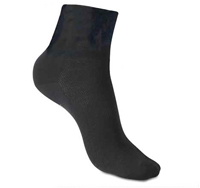
I have four pairs of black socks packed for my bike tour in South America this year. I wear these socks while I’m cycling and when I am just walking around town.
![]()

I rotate between the three pairs of underwear that I carry – with one pair almost constantly being in the process of being cleaned or dried.
![]()

I don’t know exactly what model of sunglasses I have, but I do know they are made by Nike. They do a good job of blocking out the sun, but they pinch the back of my head and fall off my nose rather easily. I wouldn’t recommend them… and I’m in the process of trying to find a new pair of sunglasses.
![]()
The big addition to my bicycle touring gear list this year is the addition of the DJI Phantom 4 Quadcopter (or drone). Carrying the drone, remote controller, battery charger and spare propellers is not a lot of fun (because it’s pretty large and weights quite a bit), but I am able to fit the drone inside one of my rear panniers and carry it with me as I cycle. Watch the videos from my bike tour in Europe this year and you’ll see that the Phantom 4 got me some spectacular photos and videos from my travels!
![]()

Because I’m not just bicycle touring, but working from the road as well, I carry my MacBook Pro laptop computer and charger with me. It’s pretty heavy, but I’m grateful to have it when the time comes for me to sit down and do my work.
![]()

My computer is probably the most important item that I own. That’s why, when I’m bicycle touring, I do everything I can to try and protect it. And that includes wrapping the computer in a padded laptop case and then placing that case into my padded backpack inside one of my rear panniers.
![]()
Even though Ecuador and Colombia use US-style outlets, I brought my Travel Smart All-in-One Power Adapter with me to South America – just in case. I also brought it because it has a USB charger on its side, which makes it super easy for me to recharge my smartphone and bike lights without having to plug in my computer.
![]()
My Canon T2i DSLR camera is getting pretty old and can now be purchased for only $215 USD, but it has produced some amazing bike tour photos for me over the years. I carry the camera in my handlebar bag so I can quickly snap photos from the road.
![]()
In order to protect my DSLR camera, I carry it in this Lowepro SLR Camera soft case. The product is shown here with both a shoulder strap and a hand grip, but I cut them both off (to save weight) and don’t use either one of them.
![]()
This is the lens I use for most of my bicycle touring and travel photos. It doesn’t produce the sharpest images in the world, but its zoom lens makes it the most useful of all the DSLR camera lenses I’m carrying.
![]()
When the situation is right, I will pull out my Canon 50 mm lens and use it to take some really high-quality photos. This is a fixed lens, which produces super sharp images, but can really only be used in certain situations.
![]()
For landscape photos, interior hotel room images, and video blogging, this is the lens I resort to first. It has a slight bubble to the image that is noticeable in videos, but not so much in still images.
![]()
The Canon Powershot ELPH 350 HS is my go-to camera for video blogging.The vast majority of my videos this year were shot on the small, lightweight point-and-shoot camera.
![]()
For mapping out my route, listening to music/podcasts, learning foreign languages and simply entertaining myself, my Samsung Galaxy S5 smartphone is my best bicycle touring tool.
![]()
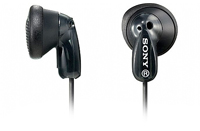
When I crawl into my tent at night, the first thing I usually do is plug my earphones in and start listening to a podcast. On occasion I will cycle with the earphones in my ears, but that rarely ever happens.
![]()
All of the photos and videos I shoot on my bicycle touring adventures is stored on this single Western Digital 2 TB hard drive. In addition to the drive itself, I am also carrying a Western Digital external hard drive case, which helps to protect my hard drive from the bumps and dirt involved with bike travel.
![]()
I spend a lot of time off the bike when I’m traveling, and I like to have a backpack to carry my things around in during these moments. The Patagonia Refugio 28 L backpack is new to me for this bike tour in South America, but I like it thus far.
![]()
For my bike tour in South America this year, I left my regular tripod at home and opted to use this much smaller and lighter Jobi GorillaPod SLR Zoom tripod. I haven’t had enough experience with it yet to give it a full review, but I do like its size and weight benefits.
![]()
All of my toiletries are carried in this single REI toiletry case. I have not listed the individual toiletries that I am carrying, but I will tell you that for this particular bike tour in South America, I did pack a camp towel – an item I did not include in my 2016 bike tour packing list for Europe.
![]()
While I didn’t feel the need for a pack towel in Europe this summer, I decided to bring my pack towel to South America, because I knew I’d be staying in low-end hotels and hostels – many of which might not come equipped with fresh towels for its guests.
![]()

As an international traveler, I don’t go anywhere now without my passport.
![]()

I bought my Buxton zippered travel wallet at Staples several years ago and have been using it as my go-to bicycle touring wallet. I like the fact that it is zippered, so I don’t have to worry about my cash, credit cards or ID falling out.
![]()

Finally, I chose to travel this year with a lightweight journal and a single ballpoint pen. While my smartphone can be used for all sorts of note-taking, there are certain times when a good old-fashioned pen and paper are exactly what you need.
![]()
That is my complete 2016 bike tour packing list for my cycling adventure in South America. Click here to see how this gear list compares to what I carried on my 2015 bicycle touring expedition and my 2016 bike tour in Europe.
Finally, I need to reiterate what I have said with other packing lists I have published here on Bicycle Touring Pro: You should not necessarily pack like I am packing here. I am carrying far more electronics than the average bicycle tourist needs to carry – because I need those electronics to do my work here on the Internet as the Bicycle Touring Pro. You, however, should pack much lighter. So, use this packing list as a loose guideline for your own bicycle touring adventures, but please do not see it as something that should be emulated exactly.
If you want to see a good lightweight packing list, please see this article I’ve written on the subject or pick up a copy of “The Bicycle Touring Blueprint,” which contains several different packing lists that you can use to plan and prepare for your own incredible bicycle touring adventures – wherever they happen to be in the world.
If you have any questions or comments about anything I’ve mentioned in this article, please leave a comment below and I will respond to you just as soon as I possibly can. Thanks!
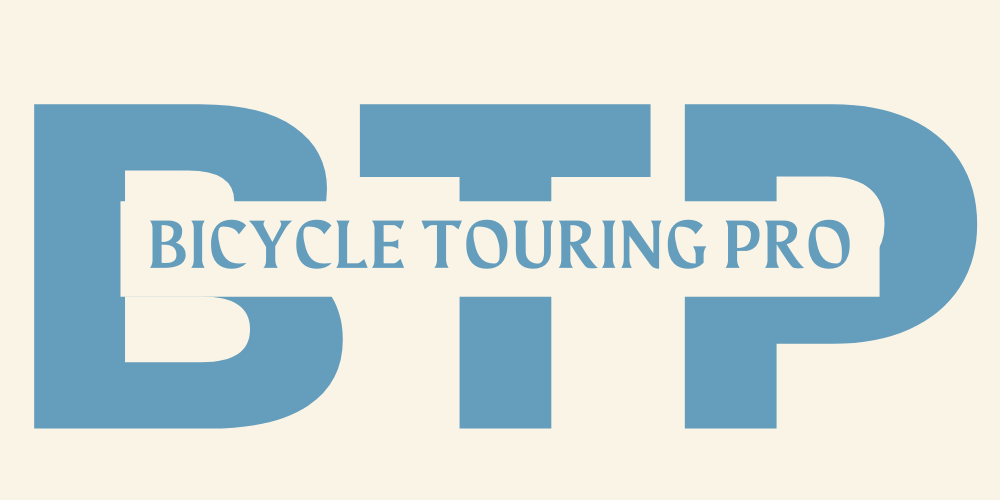







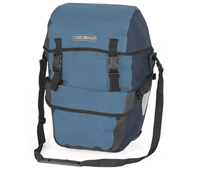






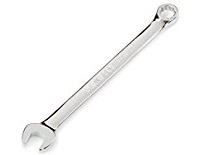
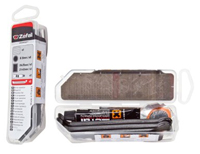
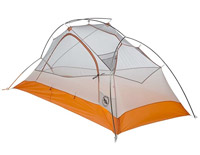


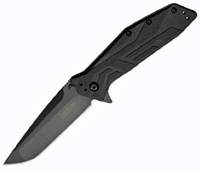

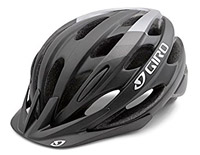









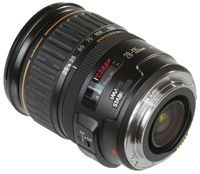
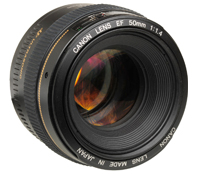





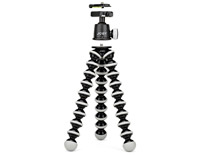


I also have done some long distance cycling in the US and Europe. Im curious what you use for navigation? Maps can be cumbersome and gps device’s are troublesome and too small to look at constantly.
I just use my smartphone for navigation… and a free offline mapping application called Maps.me
I like to wear merino wool were possible as it manages your body temperature well and it doesn’t have the polyester bad body smells. Proven!
I keep my sleeping bag as light as possible and use the option of sleeping in a light weight primaloft jacket if it’s chilly.
Why don’t you use a GPS?
I don’t see me going on bike tours without one Garmin GPS.
I use my smartphone for navigation. It has a GPS built into it.
Do you use applications for tracking your activity like Strava? Do you share your tracks?
Personally, no, I don’t.
Thanks, interesting article, they seem like a lot of things, but you really have to carry them all
Hai friend,
I read your article, you are well prepared with all thinks. thanks for sharing.
What is your profession? i mean how you earn money for these trips. One thing i noticed that in your video shooting inside your house, there is nobody in the house. Are you alone in the house, mam, dad, wife, childrens are not there.
Darren,
How was the South America trip without SPD pedals this time?
Did you fill any performance problems with flat pedals?
Basically this is good idea to travel only with single pair of shoes…
It worked out well on this particular tour because I spent a lot of time off the bike… and because it was so hot that even when it did rain, my shoes were usually dry by the following day. If I were cycling in a part of the world where I knew it was going to be cold or wet, I don’t think I would necessarily take this same approach.
How much did all this weigh? Also how heavy is the bike?
Very interesting. Thanks.
Bill <
The bike with everything on it (food, water, etc) weighs about 100 lbs. Way more than I recommend anyone carry!
Hi Darren, I noticed where you mentioned looking for new sunglasses that don’t pinch or slide off. I’ve had really good luck with the brand MORRgear. My rides are usually anywhere from 25 to 65 miles and the glasses don’t slip. Even on really hot days. They are amazingly lightweight. Anti-fog is EXCELLENT. You’re doing a great job here as the Bicycle Touring Pro. Really enjoy following you. Thank you!